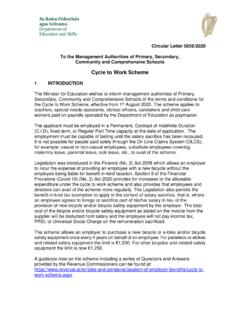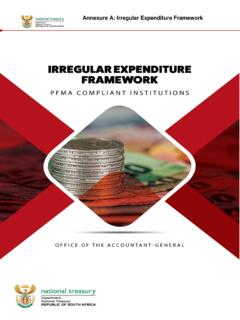Transcription of JP 3-60, Joint Targeting - Just Security
1 31 January 2013 Joint TargetingJoint Publication 3-60 Intentionally Blank i PREFACE 1. Scope This publication provides doctrine for the planning, coordination, and execution of Joint Targeting . 2. Purpose This publication has been prepared under the direction of the Chairman of the Joint Chiefs of Staff (CJCS). It sets forth Joint doctrine to govern the activities and performance of the Armed Forces of the United States in Joint operations and provides the doctrinal basis for US military coordination with other US Government departments and agencies during operations and for US military involvement in multinational operations.
2 It provides military guidance for the exercise of authority by combatant commanders and other Joint force commanders (JFCs) and prescribes Joint doctrine for operations, education, and training. It provides military guidance for use by the Armed Forces in preparing their appropriate plans. It is not the intent of this publication to restrict the authority of the JFC from organizing the force and executing the mission in a manner the JFC deems most appropriate to ensure unity of effort in the accomplishment of the overall objective. 3. Application a. Joint doctrine established in this publication applies to the Joint Staff, commanders of combatant commands, subordinate unified commands, Joint task forces, subordinate components of these commands, and the Services.
3 B. The guidance in this publication is authoritative; as such, this doctrine will be followed except when, in the judgment of the commander, exceptional circumstances dictate otherwise. If conflicts arise between the contents of this publication and the contents of Service publications, this publication will take precedence unless the CJCS, normally in coordination with the other members of the Joint Chiefs of Staff, has provided more current and specific guidance. Commanders of forces operating as part of a multinational (alliance or coalition) military command should follow multinational doctrine and procedures ratified by the United States.
4 For doctrine and procedures not ratified by the United States, commanders should evaluate and follow the multinational command s doctrine and procedures, where applicable and consistent with US law, regulations, and doctrine. For the Chairman of the Joint Chiefs of Staff CURTIS M. SCAPARROTTI Lieutenant General, Army Director, Joint Staff Preface ii JP 3-60 Intentionally Blank iii SUMMARY OF CHANGES REVISION OF Joint PUBLICATION 3-60 DATED 13 APRIL 2007 Reorganizes discussion of targets, Targeting , the Joint target cycle , and Targeting duties and responsibilities for readability. Moves discussions on following from appendices into Chapters I, Understanding Targets and Targeting , through Chapter III, Joint Force Targeting Duties and Responsibilities : time-sensitive target considerations, intelligence support to target development, capabilities analysis and force assignment, and collateral damage estimation.
5 Adds or updates the following terms and definitions in accordance with current directives and practices: target, active defense, critical element, damage criteria, damage estimation, entity, passive defense, physical characteristics, protected emblems, and targeteer. Adds discussion of component-critical targets as distinct from Joint force commander-validated time-sensitive targets. Adds discussion on Joint Targeting working groups and describes their purpose. Clarifies roles and responsibilities during federated Targeting support. Adds United States Cyber Command s role in support of Joint Targeting and discussion on integration of cyberspace operations in Joint Targeting .
6 Adds detailed description of battle damage assessment and its role in the Targeting process. Summary of Changes iv JP 3-60 Intentionally Blank v TABLE OF CONTENTS PAGE EXECUTIVE SUMMARY .. vii CHAPTER I UNDERSTANDING TARGETS AND Targeting Introduction SECTION A.
7 TARGETS .. I-1 Target Description .. I-1 Characteristics of Targets .. I-2 SECTION B. Targeting .. I-5 The Purpose of Joint Targeting .. I-5 Principles of Targeting .. I-7 Prioritization and Special Considerations .. I-8 The Joint Targeting cycle .. I-10 Targeting and Joint Operation Planning .. I-10 CHAPTER II THE Joint Targeting cycle General Activities ..II-1 Categories of Targeting and Targets ..II-1 The Joint Targeting cycle ..II-3 Time-Sensitive Target Considerations ..II-31 The Relationship Between Targeting and Effects ..II-33 CHAPTER III Joint FORCE Targeting DUTIES AND RESPONSIBILITIES Joint Targeting Integration and Oversight.
8 III-1 Joint Force Targeting III-2 Federated Targeting Support .. III-13 APPENDIX A Legal Considerations in Targeting .. A-1 B Targeting Automation ..B-1 C Component Targeting Processes ..C-1 D The Targeting Assessment Process .. D-1 E References .. E-1 F Administrative Instructions .. F-1 Table of Contents vi JP 3-60 GLOSSARY Part I Abbreviations and Acronyms.
9 GL-1 Part II Terms and Definitions .. GL-4 FIGURE I-1 Targeting Overview .. I-6 II-1 Categories of Targeting and Targets ..II-2 II-2 Joint Targeting cycle ..II-4 II-3 Target Development Relationships ..II-6 II-4 Example Target System, Components, and Elements ..II-7 II-5 Example of Petroleum, Oils, and Lubricants Target System and Components ..II-8 II-6 Factors in Target Evaluation Within a Target System Analysis ..II-9 II-7 Commander s Decision and Force Assignment ..II-17 II-8 Phase 5 Mission Planning and Force Execution ..II-20 II-9 Correlation of Deliberate and Dynamic Targeting During Phase 5 ..II-22 II-10 Phase 5 Targeting Steps.
10 II-23 II-11 Find ..II-24 II-12 Find Step Determinations and Actions ..II-25 II-13 Fix ..II-26 II-14 Track ..II-27 II-15 Target ..II-28 II-16 Engage ..II-30 III-1 Joint Targeting Coordination Board Organization and Representation .. III-4 III-2 Notional Joint Targeting Coordination Board Agenda .. III-6 III-3 Joint Targeting Working Group .. III-8 III-4 Notional Relative Division of Joint Targeting cycle Responsibilities .. III-10 C-1 Joint Air Tasking cycle ..C-3 C-2 Notional Joint Air Tasking cycle Timeline ..C-4 C-3 Joint Air Tasking cycle Battle Rhythm.








